Why your toilet should have a room of its own
New studies confirm that flushing pumps out pathogen plumes, even when the lid is closed.
Based on Le Corbusier’s Manual of the Dwelling, this is a series where we develop a manual for understanding the homes we have today and what they must become – resilient in the face of change, supportive of our health and well-being. Efficient but, more importantly, sufficient – just what we need to be happy, healthy, and comfortable.
When Le Corbusier designed his own apartment in 1934, indoor plumbing was still rare in France. According to The French Hygiene Offensive, 1 as late as 1946, only 11 percent of French apartments had a bathroom and less than one percent had a shower. Yet Le Corbusier and his wife Yvonne’s bedroom had two marvellous bathrooms open to the bedroom; his with a big stall shower and a shaving sink, hers with a sink and a tub, with a bidet in the middle of the room. (More in my archives: Touring the toilets of Le Corbusier)
Many complained about his trademark bidets (his wife was embarrassed and crocheted a cover for it) According to Beatrix Colomina,2“Le Corbusier was denounced for having the bidet in the middle of the open space, which is simultaneously bedroom and living space. Newspaper articles attacked him for an arrangement which, they claimed, would only make sense in a brothel.”
Yet for all his celebration of the bathroom, the toilet, like most toilets in France, was jammed into a tiny, windowless closet, even though, as Colomina and Wigley note, Le Corbusier considered the toilet “one of the most beautiful objects industry has produced.”
One reason toilets were late arrivals in French homes was the worry about miasma, the belief that disease was in the air, carried by bad smells. Often, when toilets were installed in apartment buildings, they were put on stair landings and shared with other families rather than inside a residential unit; the toilet was considered dirty and people didn’t want them in their homes. So it is not a surprise that it was the only plumbing fixture that Le Corbusier put in its own room.
Miasma theory was superseded by Pasteur and Koch’s germ theory, and for much of the western world, the toilet came out of the closet and into the bathroom, although there was some resistance; according to Ellen Lupton, 3 “sanitarians were critical of the increasing trend towards including the toilet alongside the lavatory and bathtub. Health critics felt it was not hygienic to mingle functions.”
I have never thought this was a good idea, and as an architect I always tried to put the toilet in its own room. When I was in University I read Charles Gerba’s 1975 paper Microbiological Hazards of Household Toilets: Droplet Production and the Fate of Residual Organisms which found that “the detection of bacteria and viruses falling out onto surfaces in bathrooms after flushing indicated that they remain airborne long enough to settle on surfaces throughout the bathroom.”
Gerba placed gauze pads around a bathroom and measured the bacteria count on them, finding lots of bacteria surviving for hours, even when there was ventilation in the room. That drawing, and Alexander Kira’s The Bathroom, convinced me of the merits of separating the toilet from everything else.
When the pandemic hit, there was a lot of talk about the possible spread of covid from flushing toilets, and Dr. Gerba told the Washington Post what he had been saying for the previous forty-five years: close the lid of the toilet.
Gerba is still studying the subject, and was part of a team that recently published "Impacts of lid closure during toilet flushing and of toilet bowl cleaning on viral contamination of surfaces in United States restrooms.” They added a safe marker bacteria to commercial and residential toilets and flushed them open and closed.
“These results demonstrate that closing the toilet lid prior to flushing does not mitigate the risk of contaminating bathroom surfaces and that disinfection of all restroom surfaces (ie, toilet rim, floors) may be necessary after flushing or after toilet brush used for the reduction of virus cross-contamination.”
Bacteria were everywhere. One lesson I am taking from this study is that our toilet closet should have been tiled like the shower room was so that the walls could be easily washed down, and even though I have a bidet toilet seat, I should have put a sink in the room, or bought one of those clever toilets with the sink built into the lid of the tank.
An earlier study by John Crimaldi of the University of Colorado Boulder found that Commercial toilets emit energetic and rapidly spreading aerosol plumes. He and his team were studying the high-powered commercial toilets with flushometer valves, which have powerful jets of water. They used lasers to light up the plumes, and Crimaldi writes in The Conversation:
“Every time you flush a toilet, it releases plumes of tiny water droplets into the air around you. These droplets, called aerosol plumes, can spread pathogens from human waste and expose people in public restrooms to contagious diseases.”
Charles Gerba’s advice in public bathrooms is to “Flush and run.” Choose well-ventilated bathrooms if possible, and “don’t hang around the restroom” in any case.
This is one reason I have always admired the bathrooms at the Evergreen Brickworks in Toronto. It has unisex stalls with solid doors and strong fans inside.
Just make sure you pay attention to the sign. (I also like the toilet seat design with the handle for the rare time a man goes to lift the seat.)
These toilets are a lot more powerful than residential ones and usually do not have lids, but as Gerba’s recent study found, our home toilets are pumping out pathogen plumes as well.
In Le Corbusier’s Villa Savoye, the bathing area is glorious, in line with his dictum in his manual of the dwelling that it be big, bright, with room to exercise and relax.
But the toilet remains behind the brown door. And that’s where it belongs.
Beatriz Colomina and Mark Wigley, 2017, Toilet Architecture: An Essay about the Most Psychosexually Charged Room in a Building
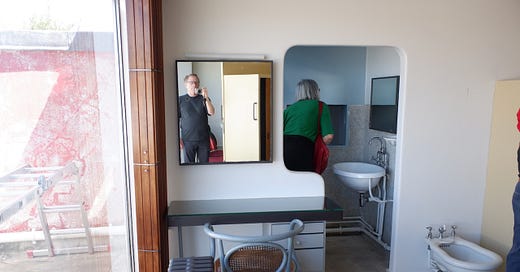



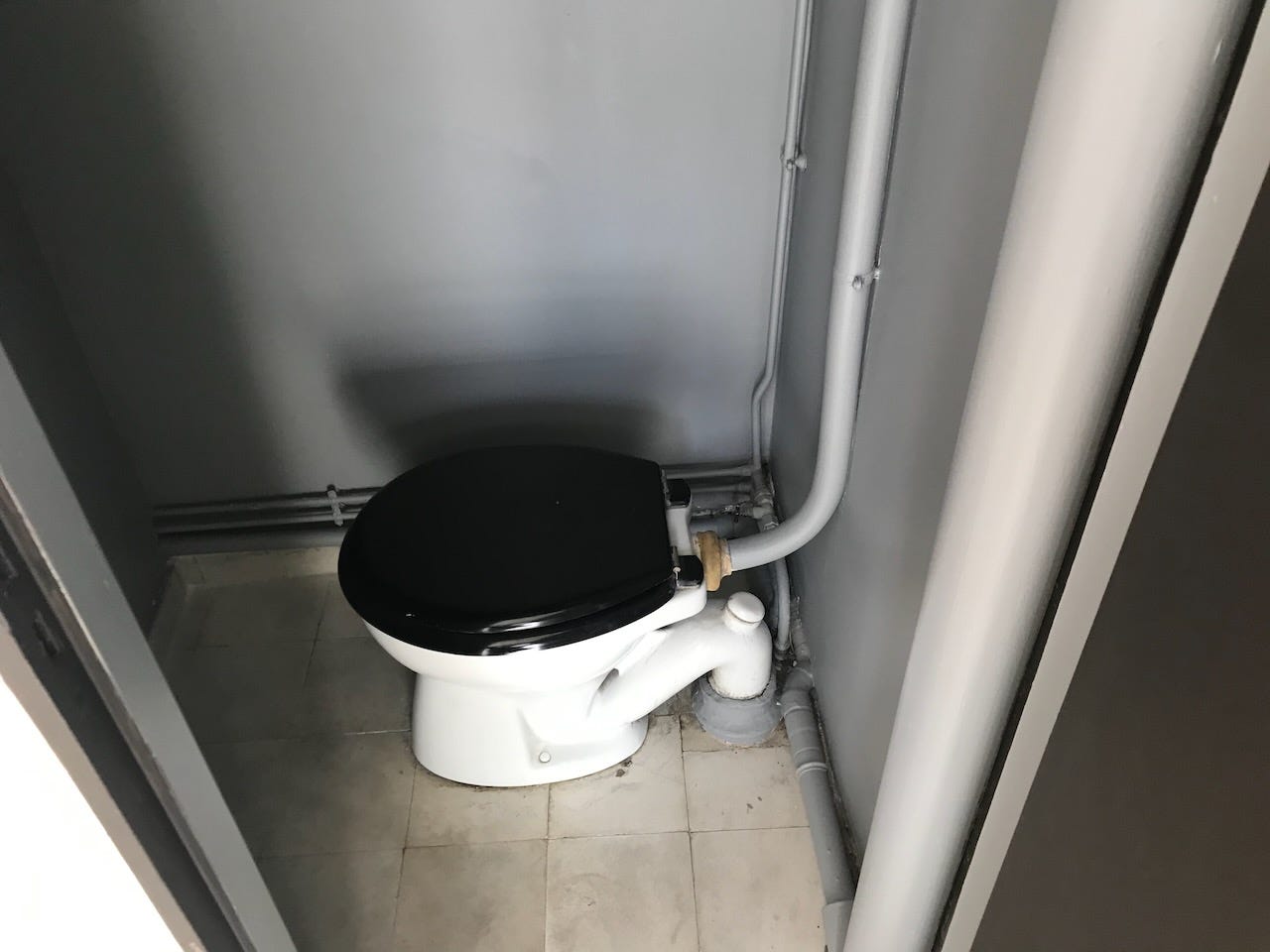
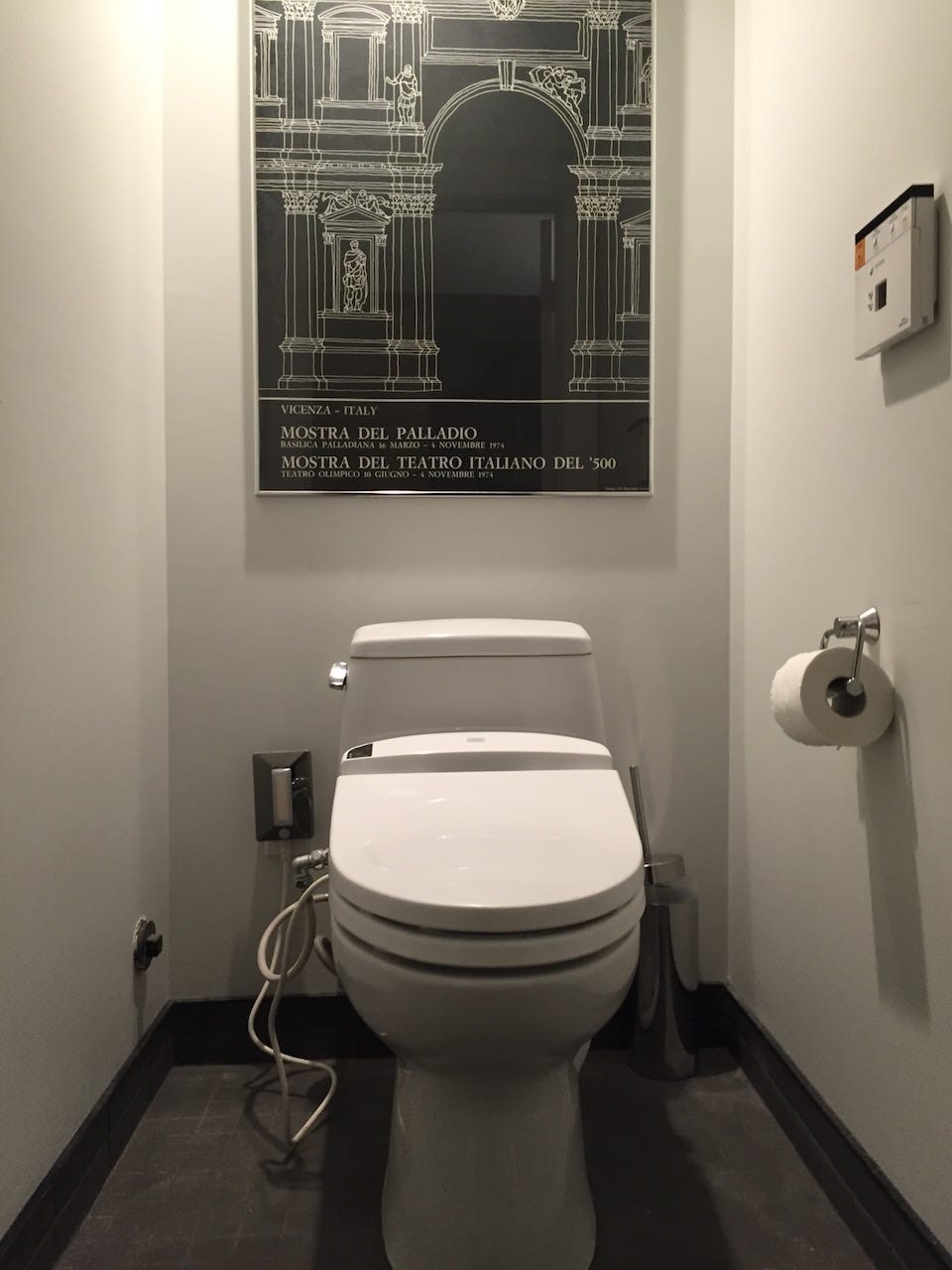

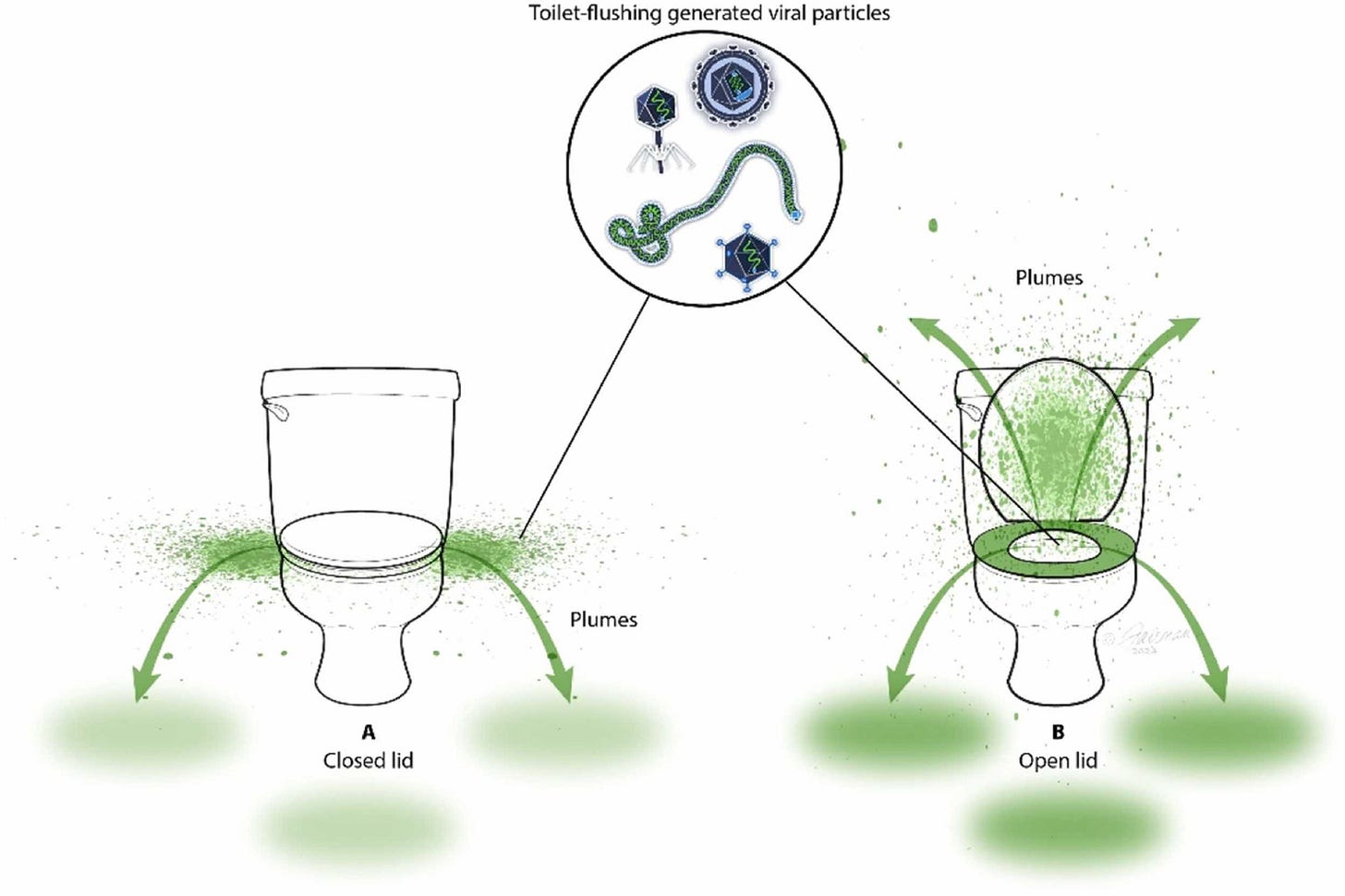
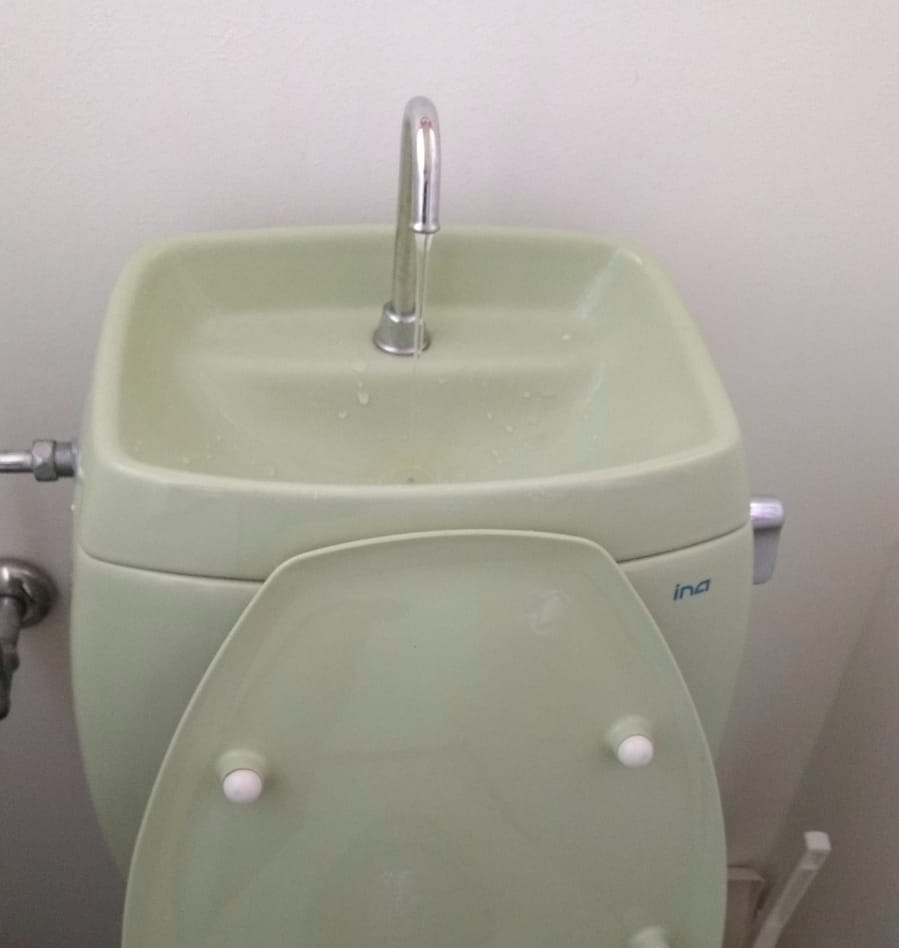
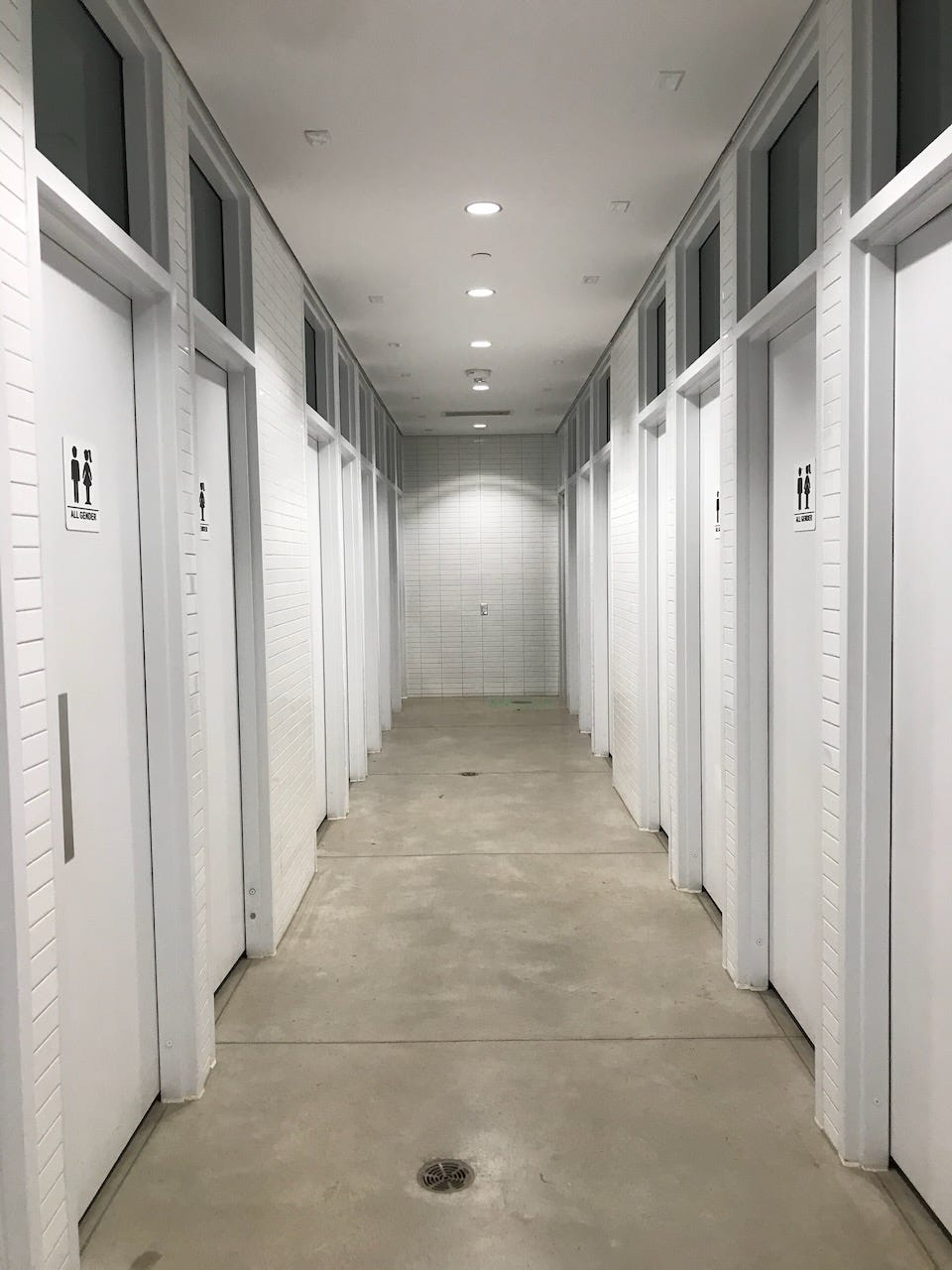
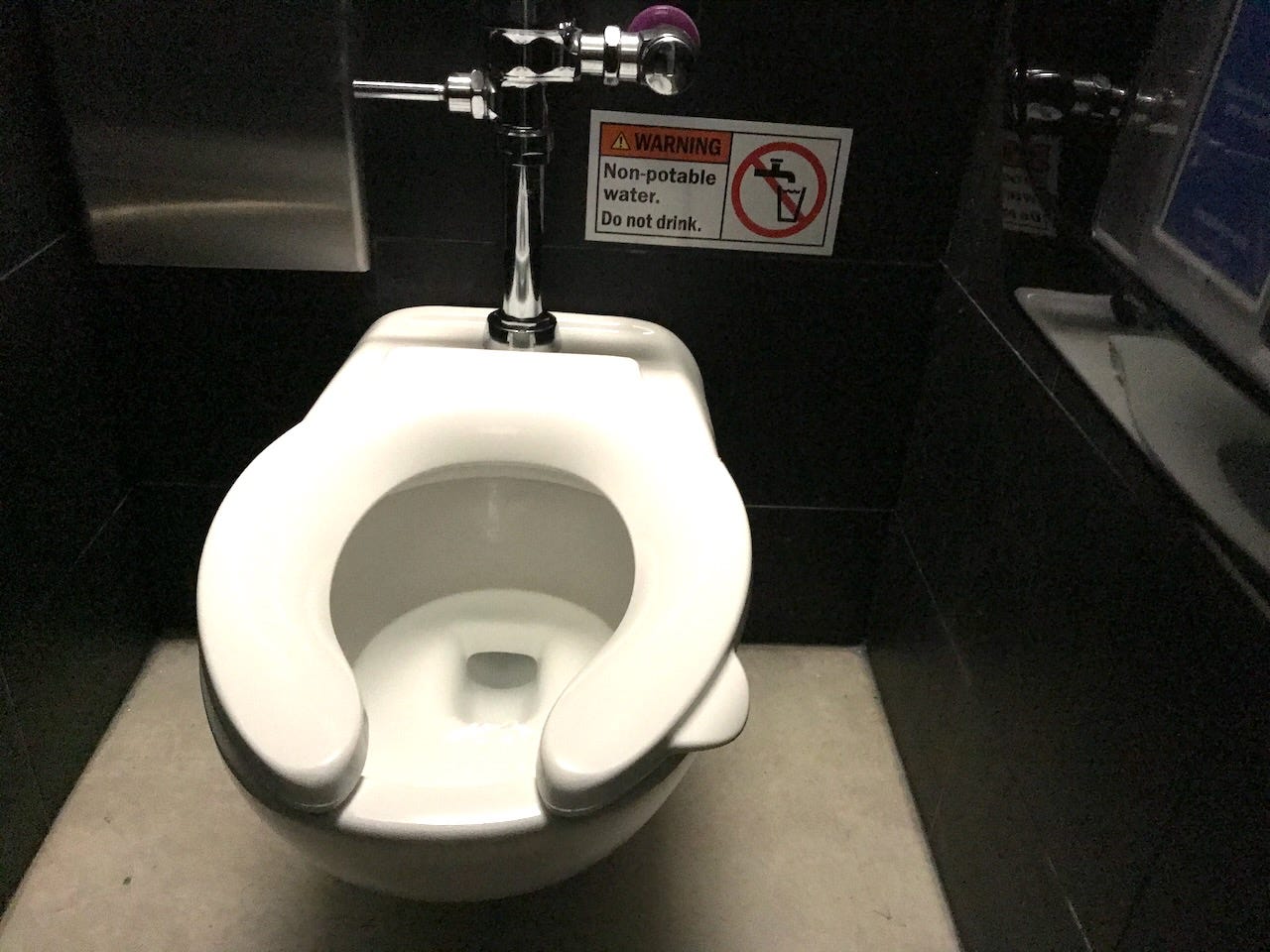
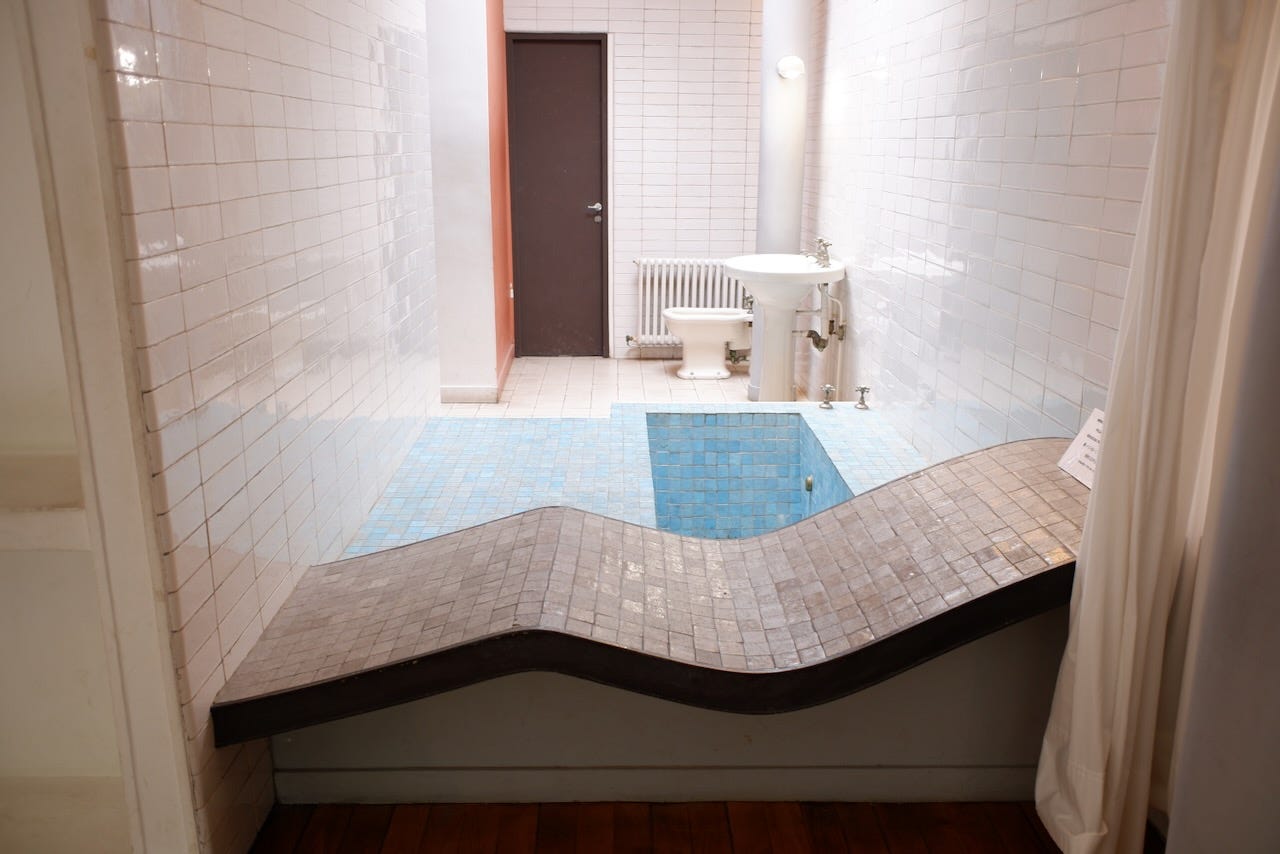
Is it strange that I find your articles on bathrooms compulsive reading?
A very interesting read - thanks! Your posts are always so informative, I really appreciate the ideas on domesticity that you share. Thank you!